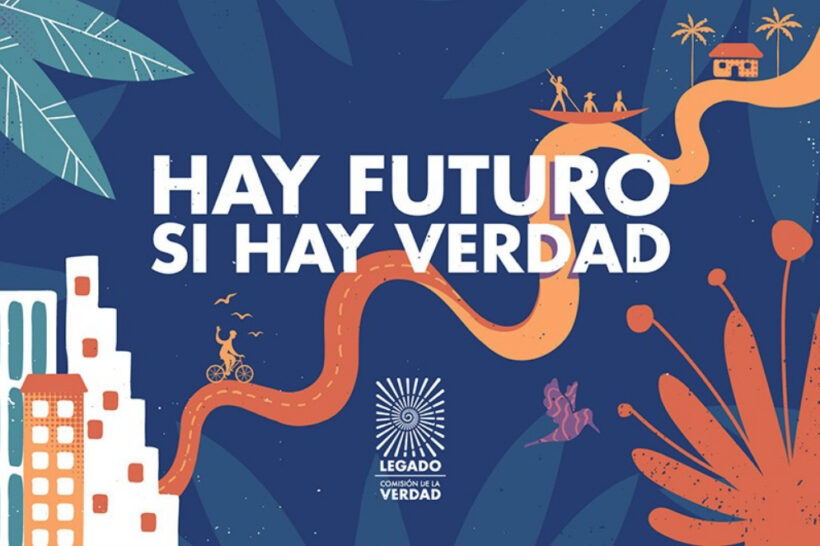On Calle 26 in Bogotá, a corner has become a meeting place for the living and the dead, for the irreversible and the avoidable, for demonstrators and the disappeared, for denunciations, carnations and wakes. There, on the western side of the fence that separates the cemetery from the Centre for Memory, Peace and Reconciliation, the world of the survivors promises not to forget; they gather with banners or drums and pay homage to those who fought their battles from another dimension.
This corner is an antidote to cowardice; it shows that there is no worse silencer than inertia and that in a country like ours, one cannot be stoic. Indifference and skepticism are contagious vices, and we must inoculate ourselves with love and courage.
For the past few weeks and throughout 2024, the Centre for Memory, Peace, and Reconciliation has been hosting the exhibition “There is a future if there is truth”, organized by the Truth Commission. It is much more than a painful review of the history of the last hundred years of Colombia; it is more than an audiovisual summary of the eleven volumes of the Commission’s report and, above all, it is something that you cannot fail to see, to feel and to take to your heart like a port or a sailboat, like an anchor or an impulse: the past is inevitable (what has already killed us cannot be turned back), but the future still depends on us.
The exhibition is an overwhelming experience. It is a collective mirror in which it is impossible not to be partially reflected; and one goes through it as if it were a human, social, and political calendar, full of voices and photographs, of mourning and resistance.
There is not a single centimeter in the exhibition that does not make sense; there is not a sterile testimony or a message that does not affect some fiber of our lives.
6 pm. I leave the column here because the Palestinian ambassador is giving a lecture and I go out to listen to him.
10 pm. With a crux in my soul, I go back to writing.
I didn’t know the ambassador, and I felt that he was a man of dignity, a mixture of sensitivity and strength; he had sad and courageous eyes… They are the eyes of memory and of those who don’t give up.
With a cracked voice and his heart in his hand, he tells us that he cannot raise his flag in his own country because it has been occupied for 76 years.
As he speaks, I see his father passing by on a bicycle, pedaling between Bethlehem and Jerusalem on his way to school. I see the ambassador himself, a 10-year-old boy, and his blue-eyed grandfather, who refused to leave his home when the invasion drove them out. I see a 73-year-old deaf and dumb man passing by, recently killed by Israeli soldiers as he tries to explain with his hands that he is not going to be killed, that he could not speak, that he could not hear them or the sound of death. I see the thousands of Palestinians who were forced to flee in 1948 and who still keep the keys to their homes in case they can return one day. As the ambassador speaks, I see – between the attendants and the night – those killed in Gaza… the poets and the teachers, the scientists and the elderly… 70% of the dead are women and children.
For decades, powerful states have tried to wipe Palestine off the world map, but not even the 70,000 tons of explosives that have fallen on Gaza in recent months will make Palestine lose hope. There are no walls, famines, tanks, or guns that can wipe out the culture of an ancient people. Solidarity with you, Ambassador. With you and with your people, who in a way are our people too.










